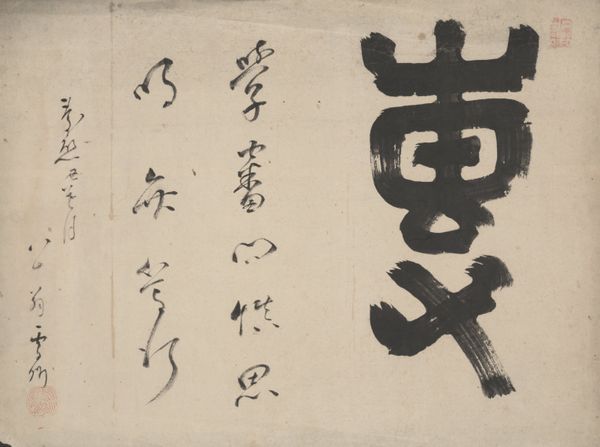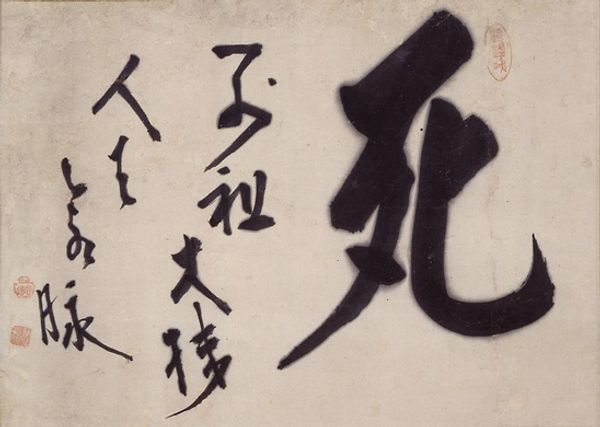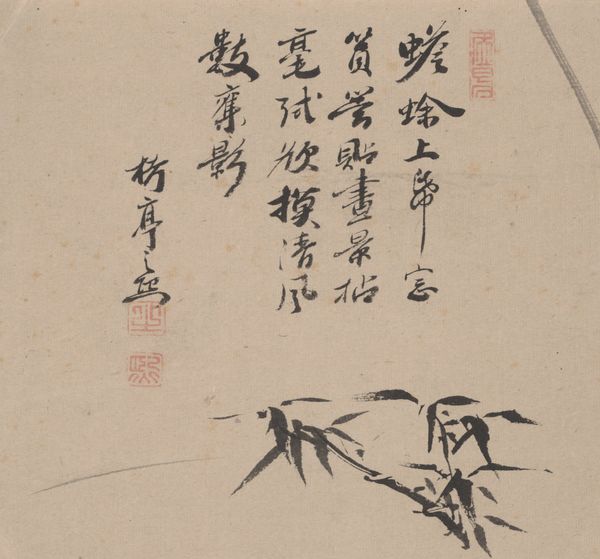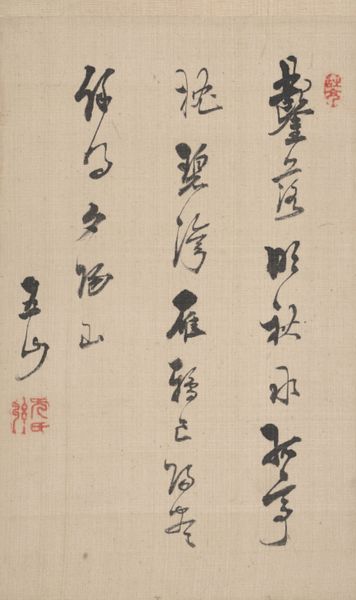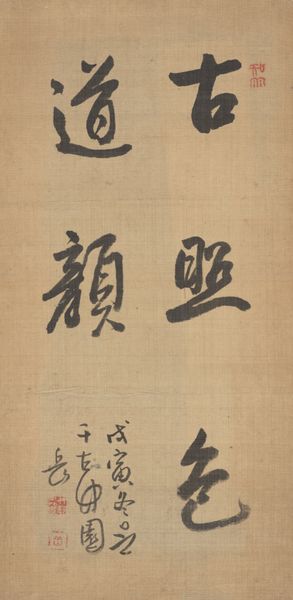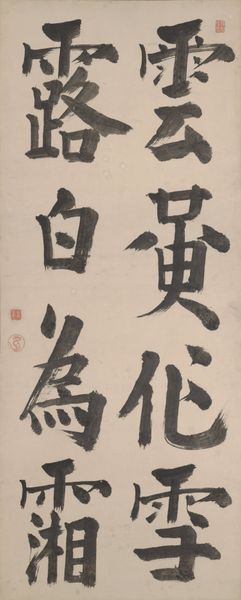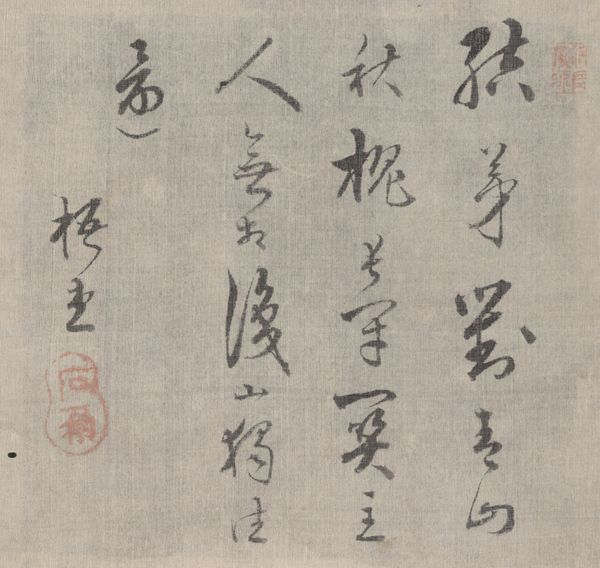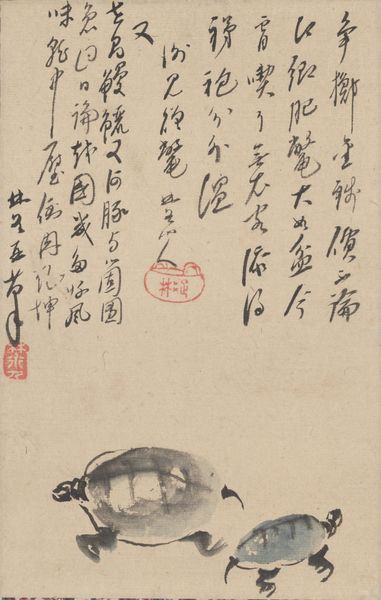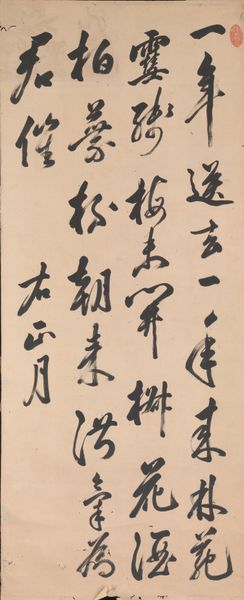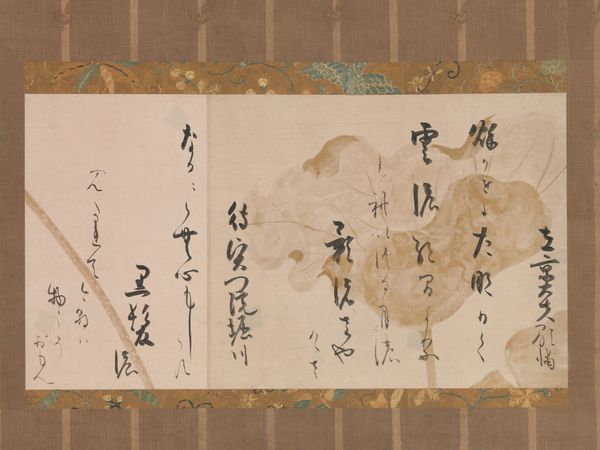
drawing, paper, ink-on-paper, hanging-scroll, ink
#
drawing
#
ink painting
#
asian-art
#
japan
#
paper
#
ink-on-paper
#
hanging-scroll
#
ink
#
abstraction
#
calligraphy
Dimensions: 16 5/16 × 20 5/8 in. (41.43 × 52.39 cm) (image)47 1/4 × 21 1/2 in. (120.02 × 54.61 cm) (mount, without roller )
Copyright: Public Domain
Kaimon Zenkaku created this hanging scroll with ink on paper in eighteenth-century Japan. The bold character that dominates the composition is ‘mu,’ meaning nothingness. Consider the materiality of ink, ground from a solid stone with water, then applied to paper with a brush. These materials demand a fluid, decisive application. The artist cannot hesitate. Look closely, and you can see the pools of ink where the brush lingered, and the dry, scratchy marks where it moved quickly. Calligraphy is deeply ingrained in Zen Buddhist practice, which emphasizes the present moment. The creation of ‘mu’ isn’t just about depicting nothingness. It's also about the artist emptying his mind, letting the character emerge spontaneously. The act of making, of embracing imperfection and chance, becomes a central part of the artwork's meaning. By understanding the process, we appreciate how the art challenges conventional distinctions between artistic skill and spiritual practice.
Comments
minneapolisinstituteofart almost 2 years ago
⋮
Kaimon, a Zen monk, varies the size of his writing to emphasize the importance of the single character to the right: “mu,” meaning nothingness, an important concept in Zen Buddhism. The calligraphy traces its origin to the prominent monastic teaching of Zhaozhou Congshen (778-897 ad), a Zen master monk. A fellow monk asks Zhaozhou if a dog has Buddha-nature, to which Zhaozhou replies, “no.” The monk then argues that everything has Buddha-nature. Zhaozhou ends the conversation by pointing out that the dog is misguided by Original Ignorance, implying that the monk himself is the ignorant dog for asking “yes or no” questions. The bold and unbroken brushstrokes render the character compact yet forceful, and creates a form that resembles a seated person in meditation. Kaimon’s writing embodies how the mighty force of Zhaozhou’s “no” shattered the conventional wisdom and helpedpractitioners polish their mind.無趙州露刃劍寒霜光焰焰NothingnessMonk Zhaozhou's drawn swordglistens like chilly frost blazing bright
Join the conversation
Join millions of artists and users on Artera today and experience the ultimate creative platform.
